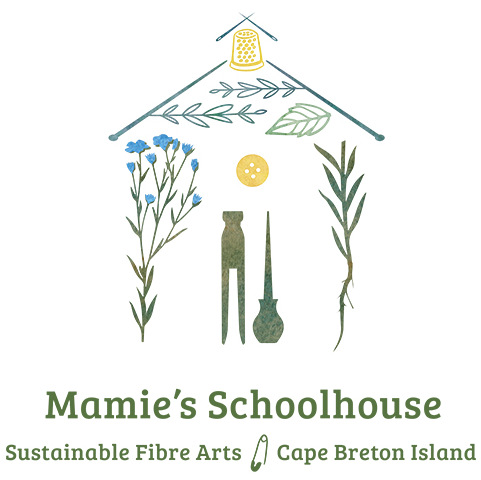Inexpensive Natural Dye Supplies
Besides dyes themselves, there are many things we use in the natural dyeing process that we can source for far less than is charged by natural dye suppliers.
In addition to the types of local suppliers noted next to each mordant, modifier, or assist listed below, all of these supplies can be purchased relatively inexpensively online from a wide range of non-natural dye suppliers.
Some natural dye suppliers may claim that their supplies are more purified, but this is rarely true. Manufacturers making one of the supplies noted below, are usually making it for many different markets, and the same product just ends up in differently branded packaging.
However, where you are looking for the absolutely purest quality of something, check out local or online science/laboratory suppliers. Many sell direct to customers and are also consistently less expensive than natural dye suppliers.
Always follow dye studio safety best practices when working with powdered materials, caustic substances, etc. Definitions of the categories of supplies below can be found on my definitions page.
first, a price comparison of JUST a few Select Examples:
The prices in green are what is currently being charged through stores that are local to me. From top to bottom: hardware, garden centre, grocery store, and farm supplier.
The prices in red are currently being charged by three natural dye suppliers (as of July 2022).
All prices are before tax and, in the case of the natural dye suppliers, before shipping and handling fees which, in some cases, can easily double what you pay.
Natural Dye Supplier #3 is not in North America, but lists prices in $US.
Obviously, local prices for supplies will vary widely around the world, so may not always be exactly comparable to my local prices. However, I hope that this inspires you to explore what is available to you locally, so that you can both reduce your carbon footprint and save money.
Mordants
Iron:
The two most common iron salts used as mordants and modifiers are ferrous sulfate and ferrous acetate.
Ferrous sulfate is sold as a soil amendment (to acidify soil) through most garden centres and hardware stores. Just make sure that ferrous sulfate is the only ingredient, as some types have herbicides and other chemicals added, which you want to avoid.
Ferrous acetate is easy to make at home by soaking rusty pieces of metal in white vinegar. It can take a few weeks to fully develop, and needs to be filtered before use.
Alum:
Potassium aluminum sulphate is often sold in the pickling/preserving aisle of supermarkets and bulk food stores. It can also readily be found in Indian food stores (sometimes in crystal form, which can be powdered/dissolved at home). It is also sometimes found in hardware stores or farm stores, where it is sold as a water purification treatment. Like iron, it is also sometimes available as a soil amendment through garden centres, hardware stores, etc., either as aluminum phosphate or potassium aluminum phosphate. As with ferrous sulfate above, just make sure there are no other ingredients.
Modifiers
Iron:
See Mordants, above.
Acids:
White household vinegar can be found in any grocery store.
Citric acid crystals are used in baking, and can be found in most bulk food stores and many grocery stores.
Alkalis:
Sodium bicarbonate (baking soda) can be found in any grocery store.
Sodium carbonate (soda ash/washing soda) is found in the laundry aisle of most supermarkets, as well as through most hardware stores, and in the recreation/pool section of big box stores.
Calcium carbonate (chalk) is sold in many garden centres and agricultural supply stores (farm stores). It is also found in many hardware/building supply stores, as it is a common component of cement and other building materials. White antacid tablets, available through most chemists/pharmacies, are also made from calcium carbonate - just check to make sure that no iron or other additives are included.
Wood ashes, and wood ash lye water, have been used for centuries as an alkali in natural dyeing. The ashes from burned non-resinous hardwoods work best.
Seashells can be ground to powder (a very historic practice). These are best sourced from a fishing wharf or seafood processor, or saved from your own shellfish purchases, rather than strip-mining a beach, as shells there are an important part of a functioning ecosystem.
Water Hardeners
See calcium carbonate under Alkalis, above.
Assists
Cream of Tartar
This is the lees (sediment) from winemaking. White wine lees are best. If you make your own white wine, or know someone who does, you can dehydrate and powder the lees. You can also find it in smaller quantities on the baking aisle of most supermarkets, and in larger quantities at some bulk food stores.
Wheat Bran
Used to fix mordants on cellulose fibres, to deepen the colour of a Madder dye bath, to remove thickener from dried print pastes, and many other things, wheat bran can be purchased in bulk very cheaply from most farm supply stores. Smaller quantities are usually sold in health food and grocery stores.
Fixing Agents
See calcium carbonate under Alkalis, above.
See wheat bran under Assists, above.
Reduction Agents
The most common reduction agents used in crafting an indigo reduction vat are iron, or plant material that is high in fructose and/or antioxidants. Iron is addressed in Mordants, above.
Pure fructose is found in crystal or powdered form in the baking aisle of grocery stores, and sometimes in health food stores and bulk food stores.
Let me know in the comments below if this has been helpful, and if there are any other natural dye supplies that you think I should cover above. Happy natural dyeing!
Cheers, Mel








